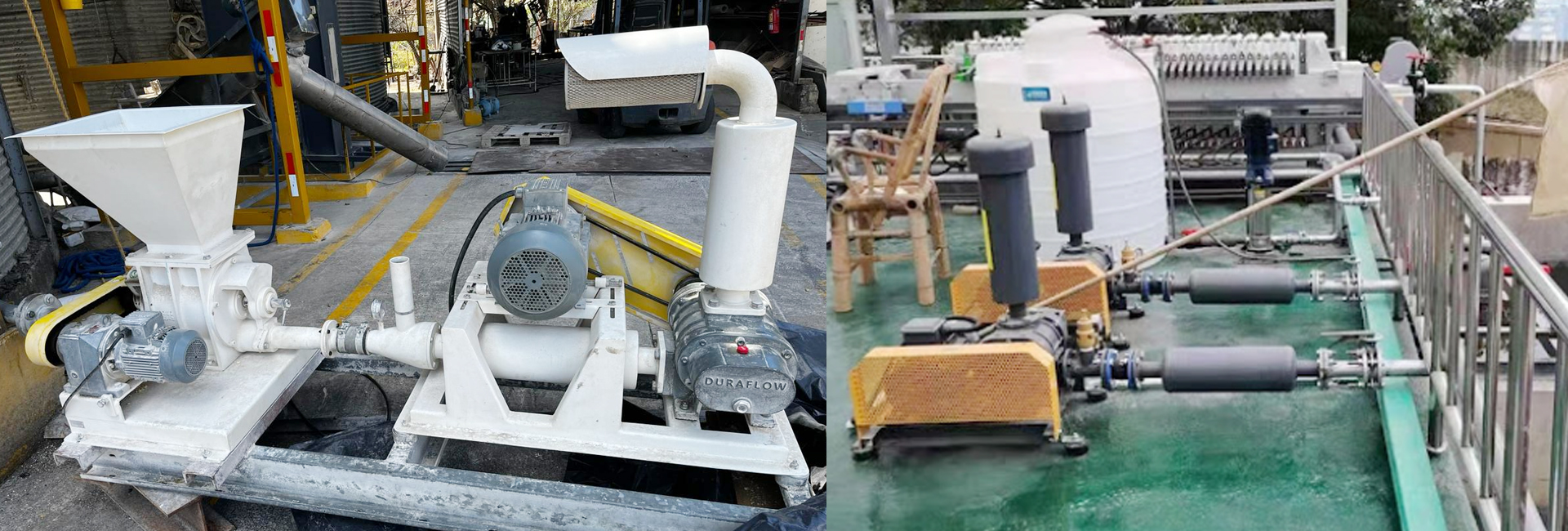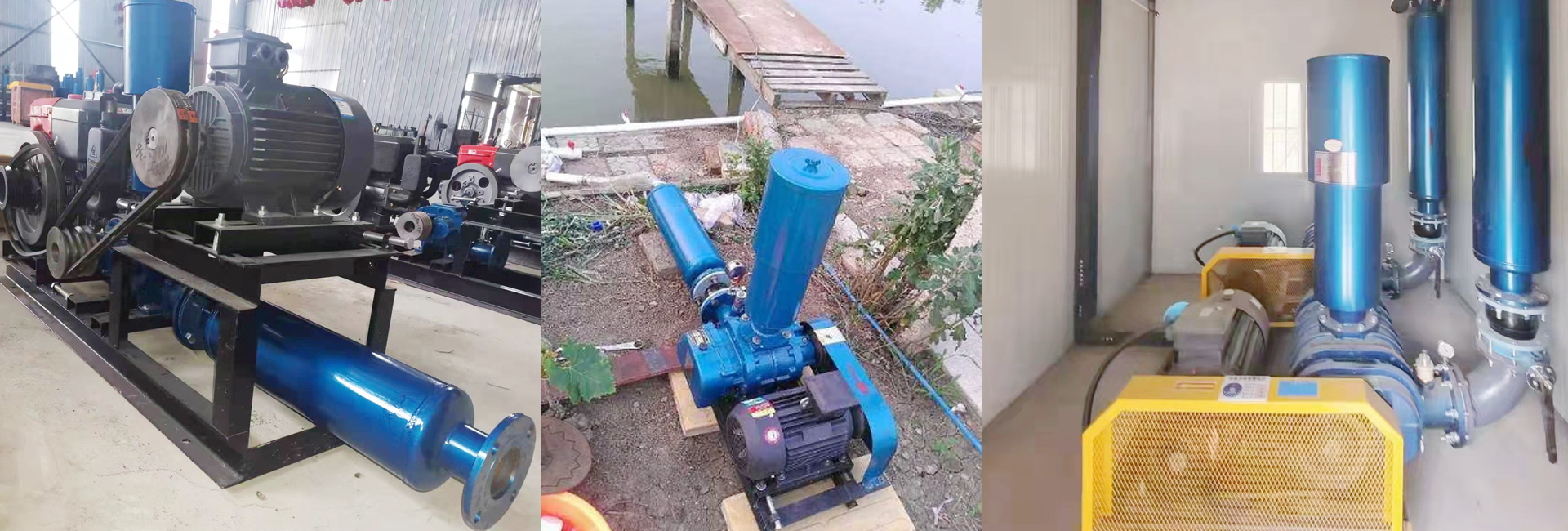What is A Roots Blower?
Roots blower is a positive displacement blower, which compresses and transports gas through the relative movement of two 8-shaped rotors in the cylinder. The following is a detailed introduction about Roots Blower:
1. Working principle
Rotor movement: two rotors (usually three blades or two blades) rotate synchronously, but they are not in contact with each other, and a small gap is maintained through synchronous gears.
Gas transportation: when the rotor rotates, it forms a sealed cavity, which forcibly transports gas from the air inlet to the air outlet, resulting in pulsating air flow.
Pressure characteristics: it belongs to a constant flow fan, the output air volume is directly proportional to the rotating speed, and the flow rate is basically unchanged when the pressure changes (overpressure needs to be avoided).
2. Core features
Advantages: Simple structure, convenient maintenance and long service life (no internal lubrication and pure gas). Suitable for medium and low pressure scenes, with high efficiency and stability. Can transport dust, moisture or flammable and explosive gases (need special sealing).
Disadvantages: The noise is loud (muffler is needed), and the pulsation of air flow may lead to pipeline vibration. When the pressure is too high, the efficiency decreases, so it is necessary to match the pressure relief valve to prevent overload.
3. Main applications
Sewage treatment: provide oxygen for aeration tank (such as activated sludge process). Pneumatic conveying: transportation of powder and granular materials (such as cement and grain).
Industrial fields: flue gas desulfurization, electroplating bath mixing, paper feeding by printing machine, etc. Special scene: vacuum cleaning (used as a vacuum pump).
4. Selection and maintenance
Type selection: choose materials (cast iron, stainless steel) and sealing methods according to the required air volume, pressure and medium characteristics (such as corrosiveness).
5. Maintenance priorities
Check the rotor clearance regularly (wear will reduce efficiency).
Clean the imported filter to prevent dust from entering.
Monitor bearing temperature and vibration, and change lubricating oil in time.
6. Common faults
Insufficient air volume: it may be due to rotor wear, belt slip or inlet blockage.
Overheating: poor lubrication, overpressure operation or high ambient temperature.
Abnormal noise: bearing damage, rotor collision or synchronous gear dislocation.
7. Compare with other fans
Centrifugal fan:suitable for high pressure and large air volume, but the flow rate changes greatly with pressure.
Screw fan: low noise, higher efficiency, but higher cost.
If it is used for aeration of sewage treatment, it is suggested to match with frequency converter and sound insulation cover, which can reduce energy consumption and noise by about 20%~30%.



